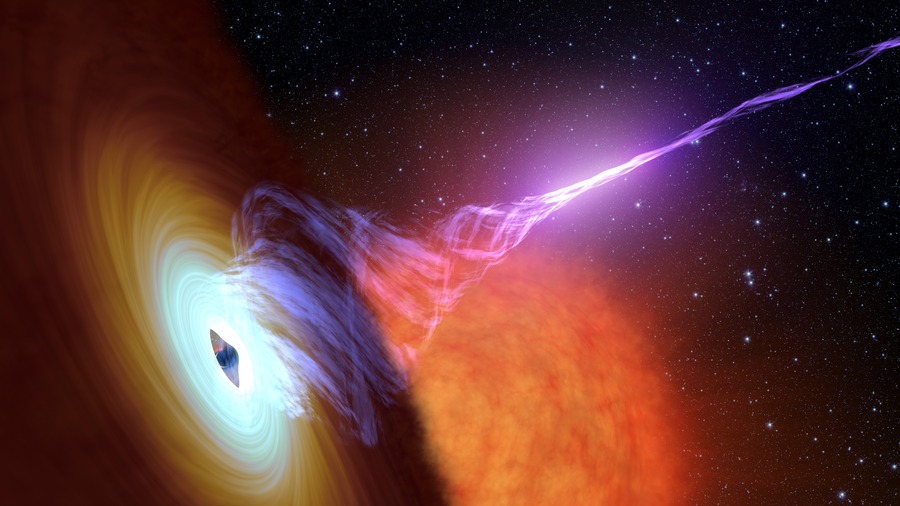
 Credit: NASA/JPL-Caltech
Credit: NASA/JPL-Caltech
Accelerating Jet
Black holes can be voracious eaters. Material that wanders too close to the black hole's event horizon falls within it, adding to the mass of the black hole, disappearing from our Universe, and expanding the reach of the event horizon. However, if you do happen to find yourself in the unfortunate circumstance of being pulled by a black hole's tenacious gravity, all hope is not lost. Some fraction of the material feeding a black hole from its accretion disk, may, due to a combination of extremely fast rotation and a strong magnetic field, escape the grasp of the black hole and be shot out into the dark reaches of space as a narrow beam of high-energy particles. The process by which this jet is accelerated from a black hole's accretion disk is a long-standing mystery. Now a combination of X-ray observations of two accreting black hole systems with the NuSTAR satellite observatory, the INTEGRAL satellite observatory, and optical observations the William Herschel Telescope's ULTLRACAM camera has helped determine the location above the disk where the jet accelerates. Simultaneous observations of these two systems, one called V404 Cygni and the other GX 339-4, showed that X-ray fluctuations occurred about one tenth of a second before similar variations in optical light. Astronomers interpret this delay as arising from the finite siize of the acceleration zone of the jet. Because the particles in the jet move at near the speed of light, this sets an upper limit on the size of the acceleration zone of about 0.1 light seconds (30,000 km) - about 1400 times the size of the black hole's event horizon.
Published: November 6, 2017
<
HEA Dictionary ● Archive
● Search HEAPOW
● Other Languages
● HEAPOW on Facebook
● Download all Images
● Education ● HEAD
>

Each week the HEASARC
brings you new, exciting and beautiful images from X-ray and Gamma ray
astronomy. Check back each week and be sure to check out the HEAPOW archive!
Page Author: Dr. Michael F. Corcoran
Last modified Monday, 26-Feb-2024 17:24:32 EST


